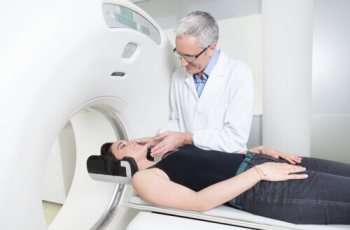
Shoulder arthritis is an arthritic condition that effects the shoulder joint and the structures surrounding it, such as the rotator cuff. Shoulder arthritis is most prevalent in the elderly (32 percent of persons over 60 years old), but it can affect people of all ages. There are three primary forms of arthritis of the shoulder: osteoarthritis, rheumatoid arthritis, and rotator cuff arthritis. The most prevalent type of shoulder arthritis is osteoarthritis, which develops when cartilage in the joint deteriorates and is replaced by bone and fluid.
Consult a physician if you are experiencing joint stiffness, pain, or edoema. Your symptoms could be indicative of an injury such as a fracture, dislocation, muscle or ligament tear. This article is for those who have been diagnosed with shoulder arthritis and wish to learn more about it.
We will explain everything you need to know about shoulder arthritis, including shoulder arthritis types, symptoms, the diagnostic procedure, and treatment options.
Arthritis of the shoulder types
The majority of us believe that arthritis is the same for everyone, but this is not the case. There are various categories and subtypes of arthritis, and even individuals with the same type may exhibit a variety of disease manifestations. As stated previously, there are three primary types of shoulder arthritis, but there are actually five. They are listed below:
Shoulder osteoarthritis: Osteoarthritis is a term used to characterise an inflammatory disease characterised by chronic wear and tear of the articular surfaces. Osteoarthritis can be caused by other conditions or develop as a result of untreated shoulder wear and strain, and it is complicated by inflammation.
Shoulder rheumatoid arthritis: This form of arthritis is likely the most severe, as your immune system attacks your joints. It can result in severe pain, joint rigidity, and joint deformation.
After an injury, post-traumatic shoulder arthritis develops. The damage caused by the trauma makes it difficult for the impacted bone area to heal properly. The damage may also harm the joint cushions and result in a form of osteoarthritis.
Rotator cuff arthropathy is comparable to a rotator cuff rupture, in which the tendons surrounding the shoulder are damaged. Rotator cuffs are essential because they enable you to rotate your arm. When these tissues are affected by arthritis, shoulder movement will be extremely excruciating, and the cause of rotator cuff arthropathies can be difficult to determine.
Shoulder avascular necrosis is a condition characterised by the demise of blood vessels. When this occurs, the affected tissue dies, preventing the bone from recovering. This results in progressive joint injury and severe movement restriction.
⇒ Let’s now examine the causes of shoulder rheumatism.




